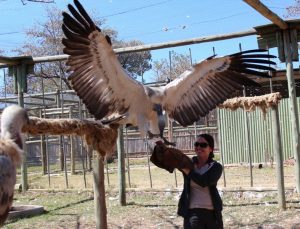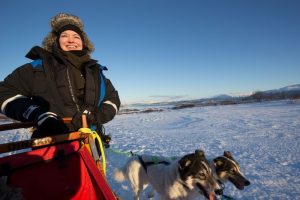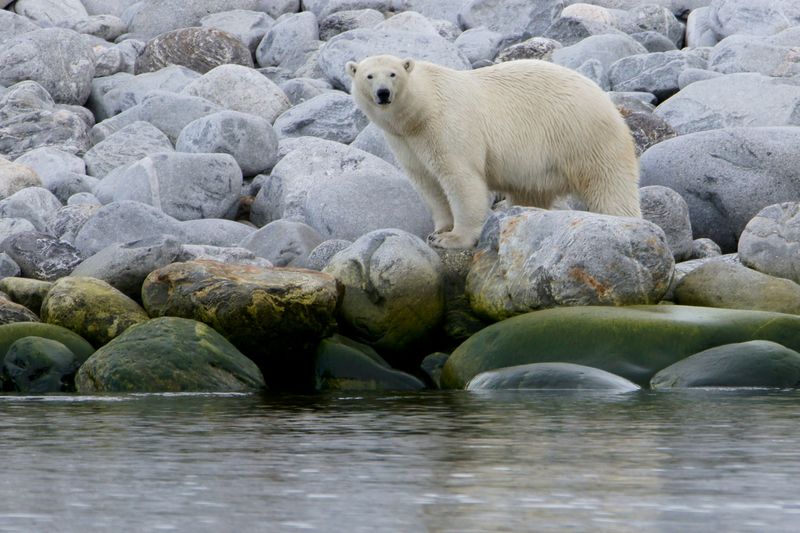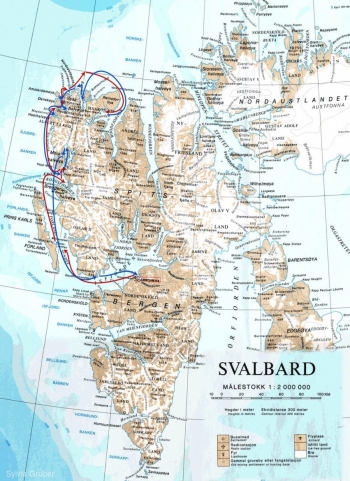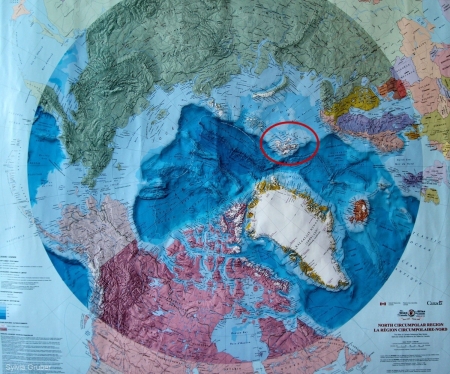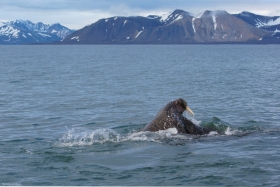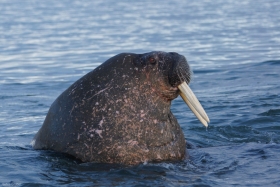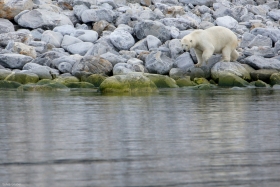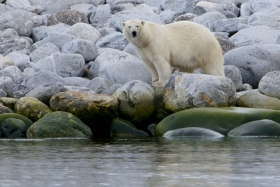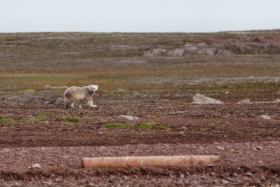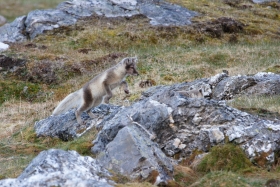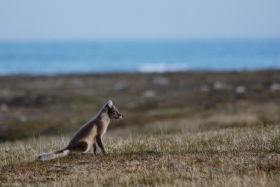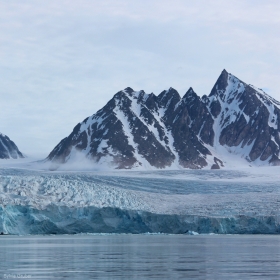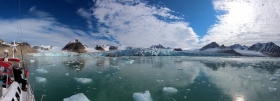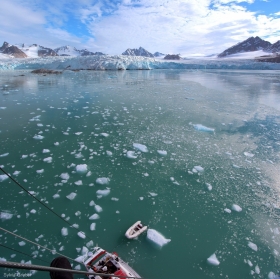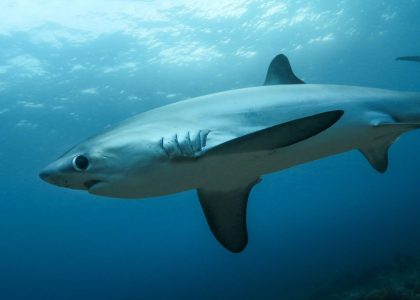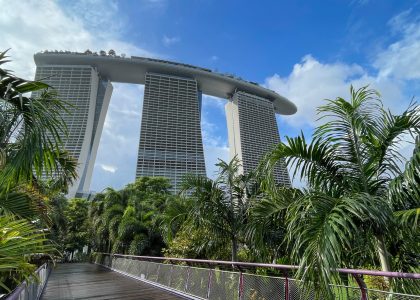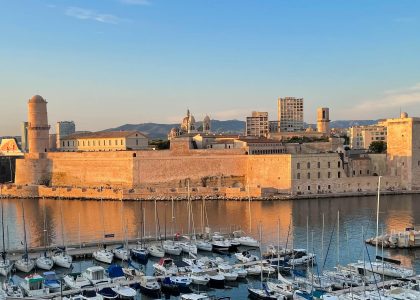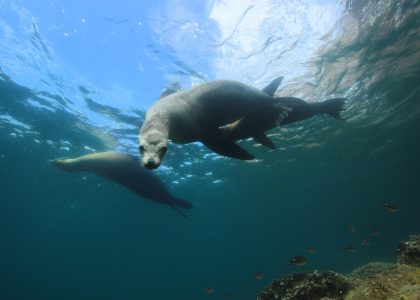On a sailing boat in the high arctic…
Travelling to Spitsbergen has been something of a novel experience for me. My dream vacation places are usually much closer to the equator, they often involve scuba diving and offer a different level of comfort. What drew me to Spitsbergen was most of all the possibility to photograph fascinating animals such as the polar bear and the idea of experiencing something different.
I don’t think I could have anticipated the vast emptiness of the arctic. Black peaks rising almost directly from the ocean, covered with snow and interspersed with glaciers. Depending on the weather conditions the sea varies in colour between blueish green and grey, the latter giving the impression that all colour is drained from the land. However, in sunny conditions the place is transformed to one of the most beautiful landscapes that I’ve ever seen.
During our trip I’ve often wondered at how well the animals there are adapted to an environment which is so hostile to humans. They thrive in a landscape with extreme temperatures, where a great percentage of land is covered by ice even in summer. Life in the high arctic is supported first and foremost by the sea. Whales, seals, walruses and birds all survive through the sea and the carnivores, such as polar bears or polar foxes that prey on them are thus indirectly dependent on the sea as well.
Our vessel was the sailing yacht Aleiga, owned by Niklas Gerhardsson, who was our skipper on the trip. I can unreservedly recommend him to anyone wishing to explore Spitsbergen without the crowds of the huge cruise ships that also operate in the area. Apart from the crowds, these cruise ships have a further, significant disadvantage. Due to their size they are unable to access all but a very few anchor sites, including Magdalenafjorden and Ny Alesund. While those are nice, they definitely wouldn’t make my top list for Spitsbergen. For example, there is a walrus colony at Poolepynten where you can get very close to the animals if you are in a small boat. However, as the area is quite shallow, larger cruise ships are forced to avoid this place.
The map below shows our route with the main points of interest.
The trip started in Longyearbyen, which is Spitsbergen’s largest “city” with a population of approximately 2040. At first glance, Longyearbyen appears to be a so-called “container city” and it’s history of coal mining does little to improve the local scenery. Although the people there are friendly and helpful I wouldn’t want to live in this place. The surrounding landscape is stunning, of course, but the city itself is a bit too isolated for my taste.
As our plane arrived close to midnight we were immediately treated to a phenomenon of summer in the high north – the midnight sun. During our whole trip the sun continuously remained at an angle which would suggest late morning or early evening. While this accounted for some great photography opportunities it also messed up my sleeping patterns. On returning from land excursions I often found myself surprised to see it was past 1 a.m. when I had assumed it was still 9 p.m. at most.
After leaving Longyearbyen, we headed north, following the coast line through Forlandsundet. At Poolepynten, we saw a walrus colony of approximately 40-50 animals, some of them playing in the water, others huddled together on land. I took the dinghy to take some pictures on land but only made it across on the third attempt. It turned out the walruses were keenly interested in the dinghy – on our first attempt we hardly made it a few meters away from Aleiga before we were surrounded by walruses. We hadn’t even known that so many of them were in the water!
Due to the possible threat of polar bears it is compulsory on Spitsbergen to carry a rifle on land excursions. Additionally, we had a flare pen to (hopefully) scare away polar bears that ventured too close. I’m quite glad we never needed any of those.
As we continued north we encountered bearded seals in front of the numerous glaciers, Minke whales, reindeer and a couple of Arctic Skua – rather aggressive birds, which did a good job of scaring us off when Sonja and I (unintentionally) ventured too close to their young – in the parents’ view 15 meters was quite close enough!

On our third day, we had our first polar bear encounter. Niklas spotted him when he was still so far away that we could only see a tiny white dot in the water close to shore. As we got closer we saw a large male, apparently well fed (500kg min), wandering north along the coast at the Knattbreen, a glacier north of Magdalenafjorden. Although it can be hard for polar bears to find sufficient food in summer this one seemed to have no difficulties. As the bear was slowly making his way north, he picked off the chicks of Brent geese that were nesting on the shore.
On day four we crossed 80° north, which didn’t really impress me because the weather was cold and foggy and the sea a dreary shade of gray. However, when we were back at home I checked the maps again and I have to admit 80° is quite far north compared to Greenland or Alaska.
The furthest point of our trip was Liefdefjorden, a beautiful fjord with glaciers and small, flat islands. On arrival we were greeted by our second polar bear, another male, bigger and probably a bit older than the first one. Both seemed to cope well with the absence of the pack ice and the resulting decrease in seals, which constitute a major part of their prey. We stayed in the area overnight and were rewarded the next morning by our third polar bear encounter – this time a female with its cub! Naturally we stayed with them for a while, watching the mother relax and the cub play, then saw them swimming to one of the small islands to catch a few chicks. Later that day, as we were heading out of the fjord, we came across a small group of minke whales.
On our way back we stopped at Harbour bay, named for the harbour seals that often rest there. Unfortunately I got a spray of sea water on my lens before we got close enough – so that’s how you learn to always protect your equipment!
Close to Magdalenafjorden we saw a walrus resting on an ice shell, which presented another nice opportunity for taking pictures.
Another event worth mentioning is the big glacier calving at Liljehoek glacier. According to our skipper, it was the biggest calving that he had seen in 15 years of travelling Spitsbergen. Niklas later calculated that the calving was at least 1 kilometer in width and 100 meters in height, comprising more than a million cubic meters of ice. Fortunately, we were watching from a safe distance and the water had enough depth so we barely felt the flood wave.
On our last day before returning to port in Longyearbyen, we were lucky enough to be in the right spot at the right time. We wanted to get a few shots of polar foxes and Niklas said there was a good chance that a group of them would be in the area.

Alkhornet is a bird cliff at the entrance of Isfjorden with a few hundred meters between the cliff and the ocean.
The bird cliff provides shelter to hundreds and thousands of black guillemot, who raise their chicks in nooks and crannies high above ground level. Once a year their chicks have to make their way to the sea at a time when they are not yet able to fly properly. So, when one of the chicks takes the plunge, followed by a more or less uncontrolled nose dive to the sea, the others follow. All of them. Their fathers fly with them and try to guide them to the ocean (the mothers have left the bird cliff weeks before). This is a feast day for the polar foxes who are busy picking off those chicks unfortunate enough to crash land before they reach the safety of the ocean. Some of them are lucky and make it to the ocean on foot. But if a fox is around – they watch the descent of the birds – the chicks do not stand a chance. For the foxes this is one day of plenty in a year.
We had a great time watching this drama unfold and taking pictures while the six excited foxes were running to and fro, often only a few meters away from us, not at all disturbed by our presence.
So this is Spitsbergen to me – a place of extremes that is forbidding and awe-inspiring all at once.

